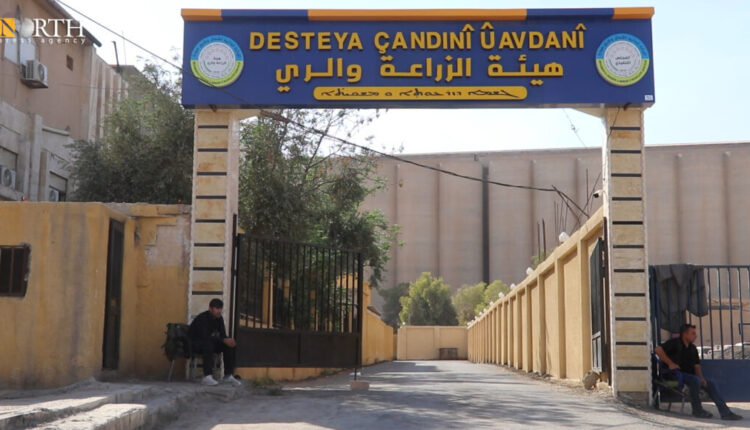The regions of Autonomous Administration of North and East Syria (AANES) have witnessed a significant surge in the production of strategic crops during 2023. This comes after two years of drought that had a significant impact on the food security of the region’s population.
The AANES states that it aims to achieve self-sufficiency in most crops, which has been accomplished in wheat production this year. Wheat production exceeded one million tons after supporting farmers with production supplies and purchasing it for an incentivized price.
Self-sufficiency
Muhammad al-Dakhil, Co-chair of the Agriculture and Irrigation Board of the AANES, says, “The agricultural plan is scientifically studied with specific proportions allocated to each crop to achieve self-sufficiency and generate surplus production for export purposes.”
“The agricultural plan for irrigated and rain-fed lands has been approved with specific percentages. In the case of rain-fed areas, each region has its own corresponding agricultural plan, which depends on the amount of rainfall in that particular region,” he says.
Regarding irrigated crops, Al-Dakhil states, “To achieve self-sufficiency, there are certain crops that can be exported, such as legumes and aromatic plants. The same applies to summer crops like cotton and others.”
He emphasizes that this plan serves the agricultural program comprehensively and aims to achieve complete diversity in all crops, including summer, winter, and intensive crops.
The northeastern regions of Syria are known for their agricultural richness in certain crops, which serve as a primary source of income for local residents. However, the agricultural sector has been significantly affected by climate change in recent years.
Officials in the agricultural sector emphasize that they have made significant progress in terms of self-sufficiency, with efforts to improve agricultural infrastructure and provide various types of support for farmers within their available resources.
Al-Dakhil explains that their policy regarding the agricultural sector is to provide support to farmers by supplying them with fuel, seeds, and fertilizers. Furthermore, “We purchase crops at high prices, such as wheat, which was procured at $430 per ton this year, exceeding the global price.”
“When we support production inputs and increase their purchase price, our aim is to stimulate economic activity and boost production within the agricultural sector.”
Revitalizing the Agricultural Sector
The Syrian war has resulted in the destruction and devastation of crucial infrastructure, leading to many farmers abandoning various crops. This has caused these crops to disappear from the country’s food supply due to the lack of a market.
Through its agricultural plan in the near future, the Agriculture and Irrigation Board aims to revive these crops, especially since northeastern Syria’s regions have a great diversity in crops.
Discussing the reasons for the decline in some crops, he states, “For instance, sugar beet cultivation has experienced a decline in its cultivated areas due to the absence of production facilities which is caused by the ongoing war in Syria for the past 12 years and the sabotage carried out by terrorist groups that rendered sugar factories non-operational. As a result, this crop has disappeared from the agricultural plan due to the decline in its market.”
“We work on the process of reintroducing these crops, but they require a market for their produce. This issue is not solely about agriculture. It cannot be resolved in the near future, but in the coming years there will be a noticeable improvement in this matter.”
The co-chair emphasized that they have revived the agricultural program by more than 90 percent. “We have activated the agricultural sector to some extent, but there are measures we will follow in the coming periods.”

